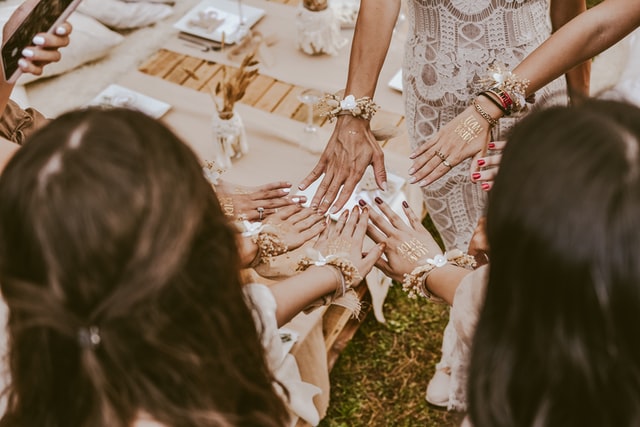Group marriage; what is? History, place in the modern world, in America. Characteristics of the Swedish family as a form of consanguineous marriage, children’s rights in Sweden.
Group marriages are the cohabitation of men and women under the same roof, owning property, and leading the same household. It is considered the oldest marriage when a man could have several wives and a wife several men.
History of group marriage
A history of the development of marriage relations was given in their works by the American scientist Lewis Morgan (“Ancient Society”) and the German philosopher Friedrich Engels. Engels, in many respects, agreed with the American researcher in his book “The Origin of the Family, Private Property and the State,” which detailed his views on this issue.
The three stages of social development – barbarism, barbarism, and civilization – corresponded to different marriages. Group marriage existed in primitive societies when human life expectancy was very low due to poor living conditions and primitive tools. Men often died hunting or in wars with hostile tribes over the best hunting and fishing grounds. To survive, one had to “secure” – to have many offspring.
Marriage (polygamy) served as insurance. Depending on the living conditions and customs of the ancient people, such a relationship resembled polygamy – one husband and several wives (polygamy) and polygamy (polygamy) – a woman lives with two or three men.
Initially, there was group marriage, where men and women of the same clan married without discrimination. A father might live with his daughter, a son with a mother, a brother with a sister. The feeling of jealousy was utterly absent. It was a period in the history of primitive society when people lived in herds and had not yet separated themselves from the animal world. Could only establish kinship based on the mother and the woman’s importance as the clan’s founder was dominant. The era of the primitive system, characterized by such relationships, historians called matriarchy.
An ancient man observed that incantations lead to degeneration. Marriage between relatives has been strictly prohibited. As a late form of consanguineous marriage, the penal family (Hawaiian – “close companion”) appeared when sisters could have several husbands from another tribe.
With the development of the economic basis of primitive society (it became easier to get food), a double marriage appeared. Young men took wives from a foreign tribe by force or by contract. It was a close-knit family, still vulnerable because of the difficult living conditions. It served as a form of adaptation to a monotonous stable relationship based on a central male role.
With the development of society’s economic model, gender relations have changed. The institution of marriage has changed. Primitive artificial relationships were replaced by marriage in its various manifestations, which is an unstable union between a man and a woman. Gradually it was replaced by a monogamous family.
It’s interesting! Marriage is now prohibited in most countries of the world. In China, it was banned in 1953, and in Nepal in 1963.

Group marriages in the modern world
Polygamous marriages existed for a long time among some Polynesian peoples. In Hawaii, back in the 19th century, the leader had several wives. On one of the islands in Fiji, a local tribe held a celebration that lasted several days. Then the ban on the “Sodom” sin came into effect. Until the next holiday.
The American traveler John Miklouho-Maclay described a custom among the Guinean Semang tribe when a married woman, with her husband’s consent, alternated with other men. The latter was not debt-free and also changed wives.
The primitive tribes of the Pacific Islands and the aborigines of Australia have kept marriage to this day. In the Australian White and Black Cockatoo breed, all males and females are considered one big family and have free relationships.
On the territory of Russia, consanguineous marriages continued among the Chukchi until the middle of the last century. The Russian ethnologist VG Bogoraz, in his work “Chukchi” (1934), wrote that these people have the custom of exchanging wives with their distant relatives. Such exchanges have reportedly contributed to strengthening family ties.
Group marriages among northerners are associated with difficult living conditions. In a challenging year for the family, only the support of relatives with a common wife helped survive. It was also customary to “give” their wives to guests. In such hospitality, you can see a primitive exchange: I give you the best I have, and you also provide me with something good. When civilization became accessible to the Chukchi, this “good” could be a pack of tobacco or a bottle of vodka.
Modern group marriage in the form of polygamy is expected in the Muslim East, where it is legalized. According to Sharia, believers can have four wives. Each is responsible for the house; you have to support them all.
In most Islamic countries, girls are allowed to marry at 15. In Saudi Arabia, a 10-year-old girl is considered a bride.
In Algeria, Tunisia, and Turkey, polygamy is prohibited by law. To remarry in Iran, you need the consent of your first wife. In Iraq, only the authorities grant such permission.




